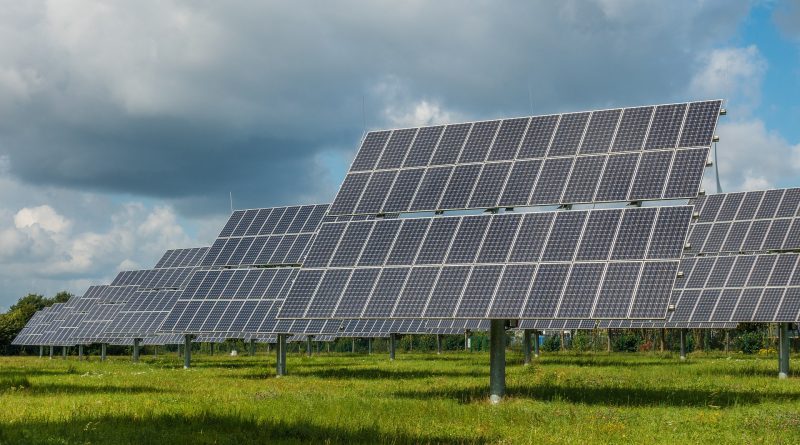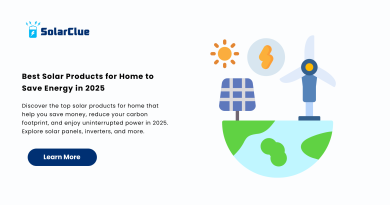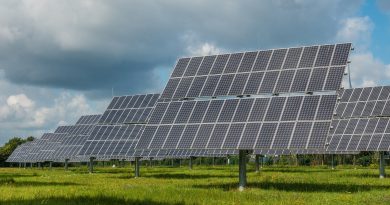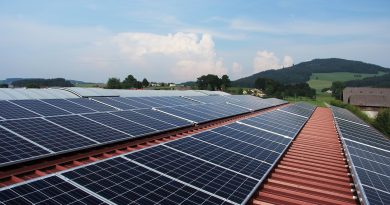Choosing the Best: Solar Power Plants
Solar power has emerged as one of the most promising solutions to combat climate change and meet the increasing global demand for clean energy. As a result, the widespread adoption of solar power plants has gained traction worldwide. However, with various types and models available, it can be overwhelming to determine which solar power plant is better suited for your energy needs. In this , we blog will compare two popular solar power plant models, analyzing their features, advantages, and limitations. By the end, you will have a clearer understanding of which solar power plant may be the best fit for you.
Table of Contents
Photovoltaic (PV) Solar Power Plants
Photovoltaic solar power plants, commonly known as PV solar power plants, are the most prevalent and widely used type of solar power plants today. These power plants use solar panels to convert sunlight directly into electricity using the photovoltaic effect. The panels consist of multiple solar cells made of semiconductor material, typically silicon, which absorbs photons and releases electrons, creating a flow of electricity.
One of the significant advantages of PV solar power plants is their scalability. They can be deployed on a small, individual scale, such as rooftop installations for residential or commercial purposes. Additionally, they are also used for large-scale utility plants, delivering electricity through the grid.
PV solar power plants offer several benefits, including renewable energy generation, low maintenance costs, and no greenhouse gas emissions during operation. However, it is essential to consider potential limitations, such as their dependence on sunlight availability and the need for large land areas for utility-scale installations.
Concentrated Solar Power (CSP) Plants
Concentrated Solar Power (CSP) plants differ from PV solar power plants in their approach to generate electricity. CSP plants focus sunlight onto a receiver using mirrors or lenses to create intense heat. This heat is then used to produce steam, drive a turbine, and generate electricity.
CSP power plants have their unique advantages. They can incorporate thermal storage systems, allowing energy storage and electricity generation even when the sun is not shining. This feature provides a significant advantage in terms of grid stability and dispatchability.
Moreover, CSP plants can achieve higher overall conversion efficiencies compared to PV solar power plants, especially in regions with high direct solar radiation. However, the initial investment costs for CSP plants tend to be higher due to their intricate design and the need for relatively larger land areas.
Comparing PV Solar Power Plants and CSP Plants
When comparing PV solar power plants and CSP plants, it is crucial to consider various factors to determine the best fit for your specific energy requirements. Firstly, the geographical location plays a significant role. PV solar power plants are suitable for regions with high solar radiation and ample available land. On the other hand, CSP plants are better suited for regions with strong direct sunlight and the need for energy storage capabilities.
Another aspect to consider is the scale of the installation. PV solar power plants can be easily installed on a smaller scale, making them an ideal choice for individual consumption or distributed energy generation. CSP plants, with their larger-scale installations and thermal storage capabilities, are better suited for utility-scale projects.
Furthermore, the availability of resources and the cost factor are essential considerations. PV solar power plants, with their mature technology and higher adoption rates, tend to have lower initial investment costs. Conversely, CSP plants may be a cost-effective choice when combined with thermal storage technologies, allowing for continuous power generation.
Conclusion
Both PV solar power plants and CSP plants offer unique advantages and cater to different energy needs. Choosing the most suitable solar power plant depends on various factors such as location, scale, resource availability, and budget constraints. PV solar power plants excel in versatility, scalability, and lower initial investment costs. Conversely, CSP plants offer the advantage of thermal storage capabilities and higher overall conversion efficiencies in regions with high direct solar radiation.
To make an informed decision on which solar power plant is better for you, it is essential to assess your specific energy requirements, evaluate available resources, and consider the long-term benefits of each technology. With the global focus on clean energy, both PV solar power plants and CSP plants contribute significantly to a sustainable future by reducing carbon emissions and dependence on fossil fuels.
Ultimately, the choice between a PV solar power plant and a CSP plant should be made based on thorough analysis and consideration of the factors discussed in this blog. By leveraging the power of solar energy, we can collectively make a positive impact on the environment and move towards a more sustainable energy future.
Ready to power up with the best solar plant? Explore options with SolarClue®. Make a sustainable choice for your energy needs.
Frequently Asked Questions
Consider factors such as energy output, system efficiency, cost, and suitability for your location.
Yes, types include photovoltaic, concentrated solar power, and hybrid plants, each with unique features and applications.
Assess your energy consumption, location, and future needs to determine the optimal capacity for your solar plant.
Advanced technologies enhance efficiency, storage capabilities, and overall performance of solar power plants.
Incentives vary, but some regions offer rebates and incentives for installing certain types of solar power plants.
Return on investment depends on factors like installation costs, energy savings, and available incentives.
Yes, solar power plants can be integrated with existing systems, but it may require professional installation and adjustments.
Maintenance varies by type but often includes cleaning, system checks, and addressing any issues promptly.
Yes, many residential systems are scalable, allowing for the addition of more panels or increased capacity.
Factors like sunlight availability, temperature, and local climate can impact the efficiency and output of solar power plants.




